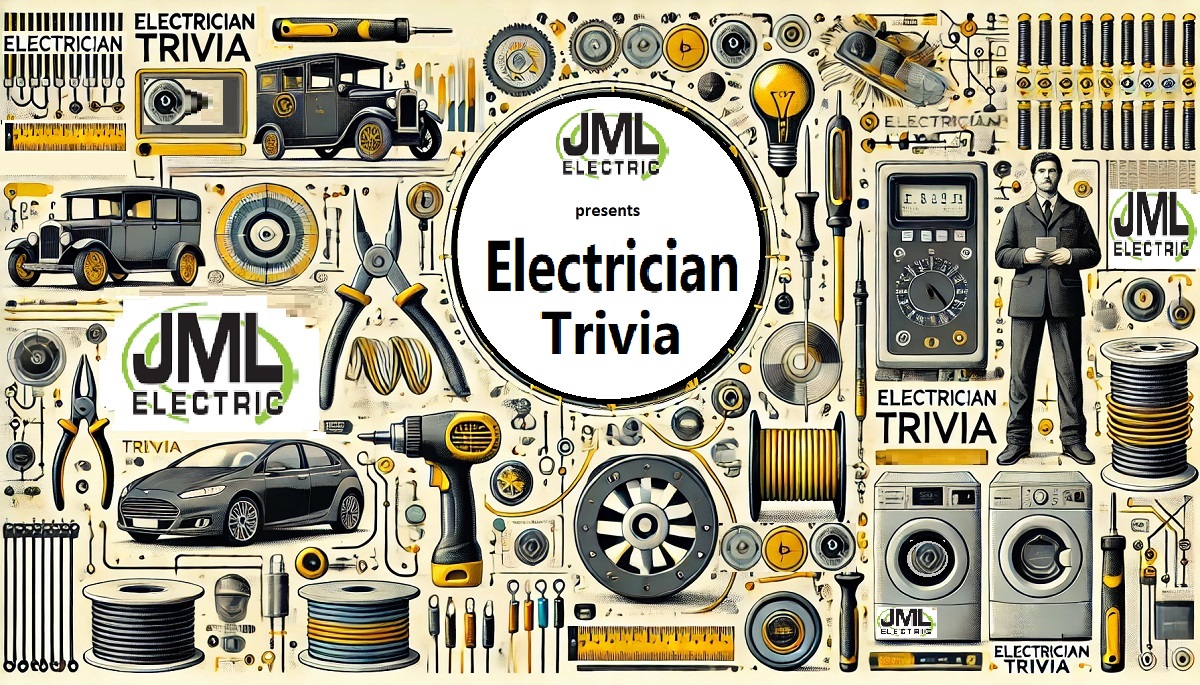
- 1 comment1
- 2 views
By Robert Campbell
Play our Electrician Trivia Game here, keeping your own score, using the slides below which are also available as a PPT download. This could be really handy if you happen to manage a Trivia Night attraction somewhere, or you can send the file to the electrician or techie in your family, or play it live with your friends on your phone.
Download the Microsoft PPT (18.3 mb) here: Electrician Trivia Game
The correct responses are presented in order at the end of this document, along with explanations and excuses for why some of the answers aren’t so cut and dry.
Eighteen Electrician Trivia Questions
Question #1
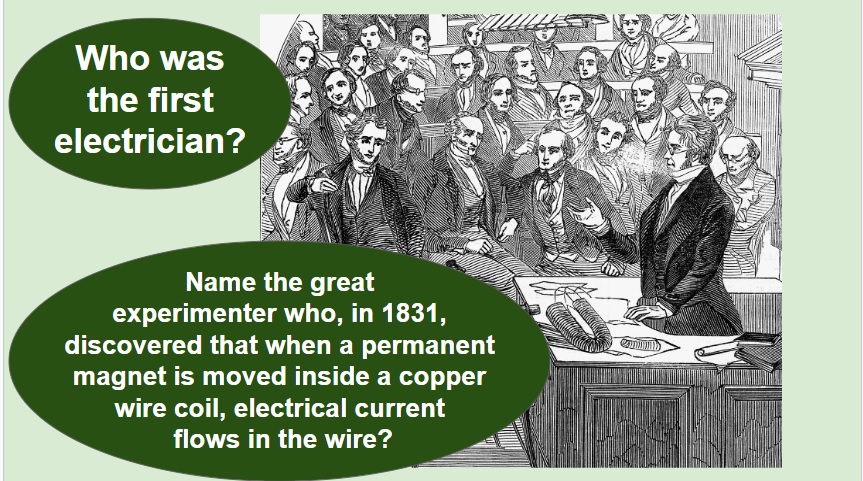
Questions #2
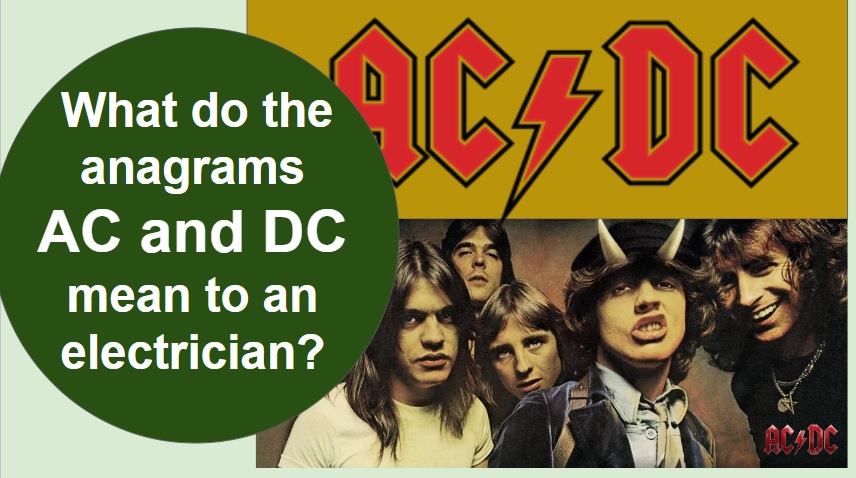
Question #3
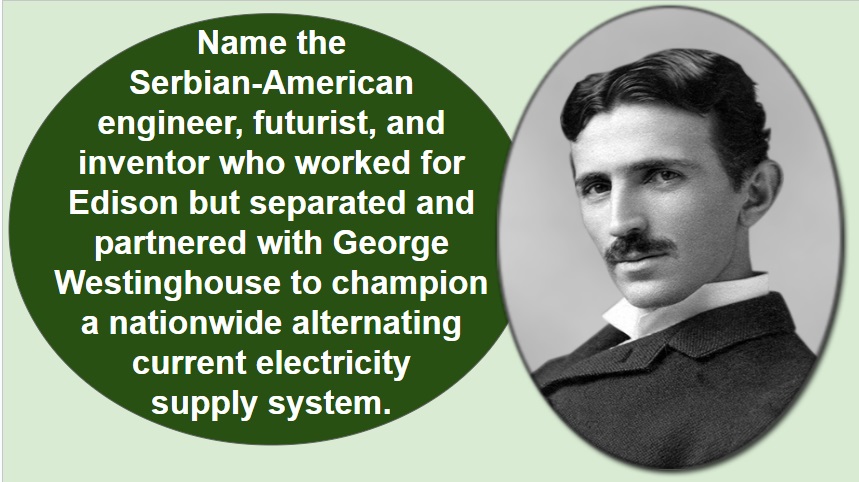
Question #4
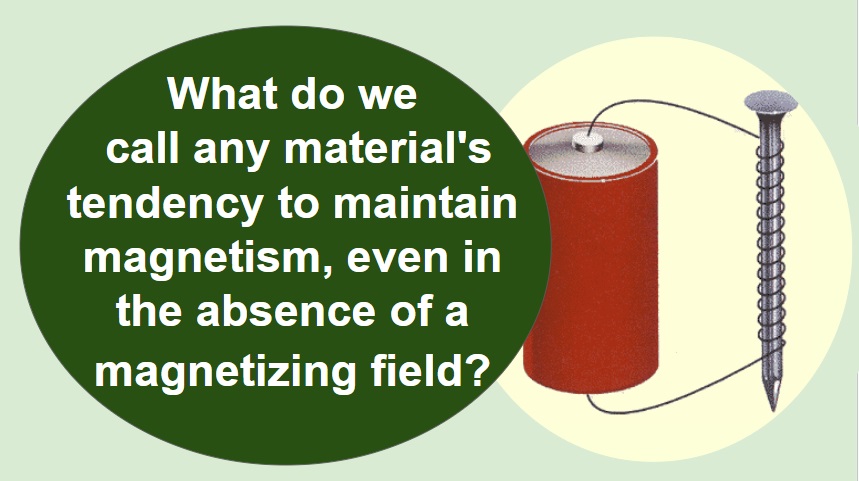
Question #5
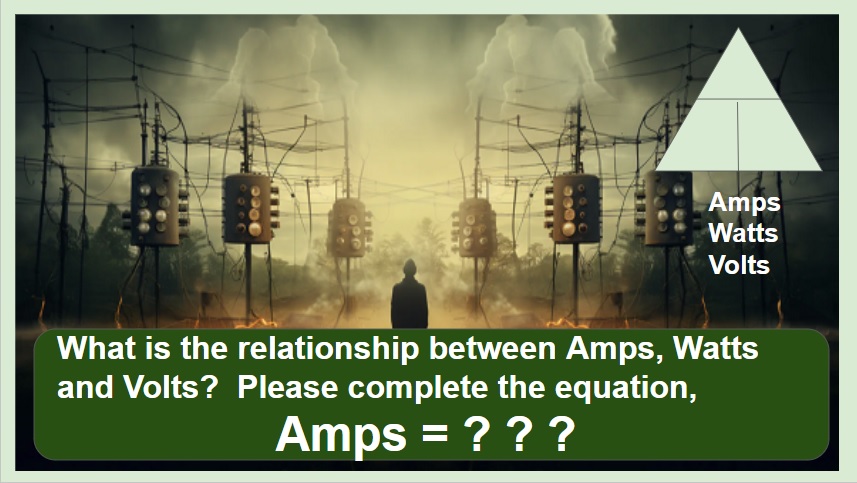
Question #6
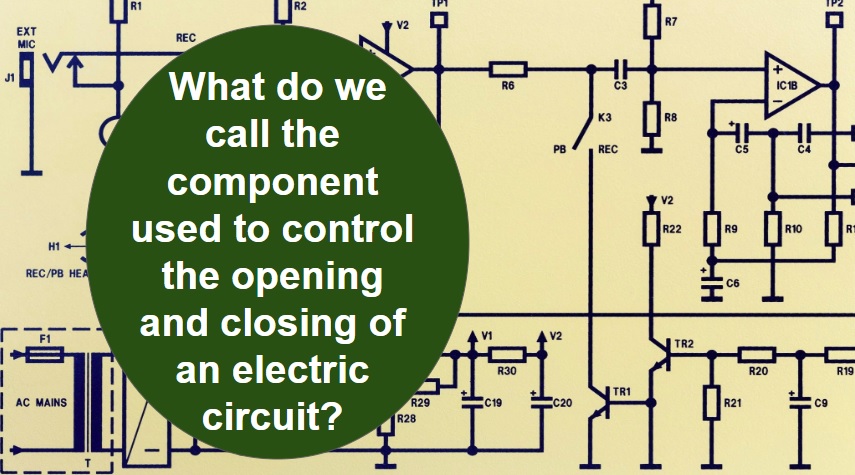
Question #7
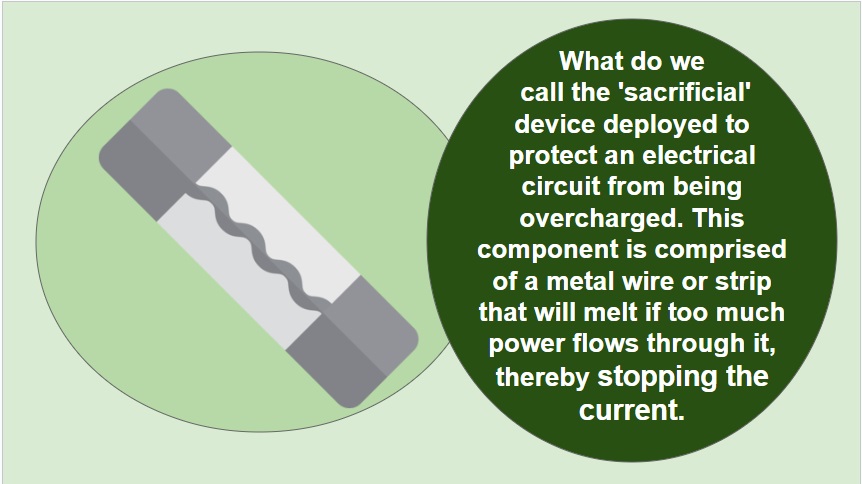
Question #8
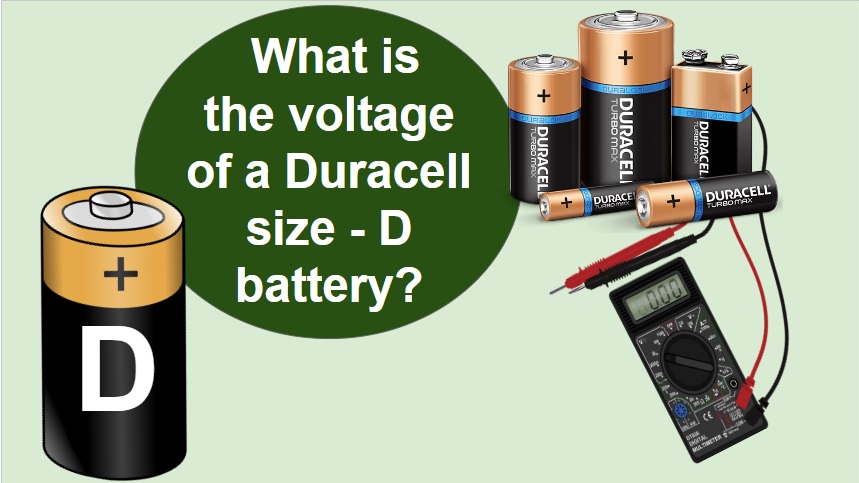
Question #9
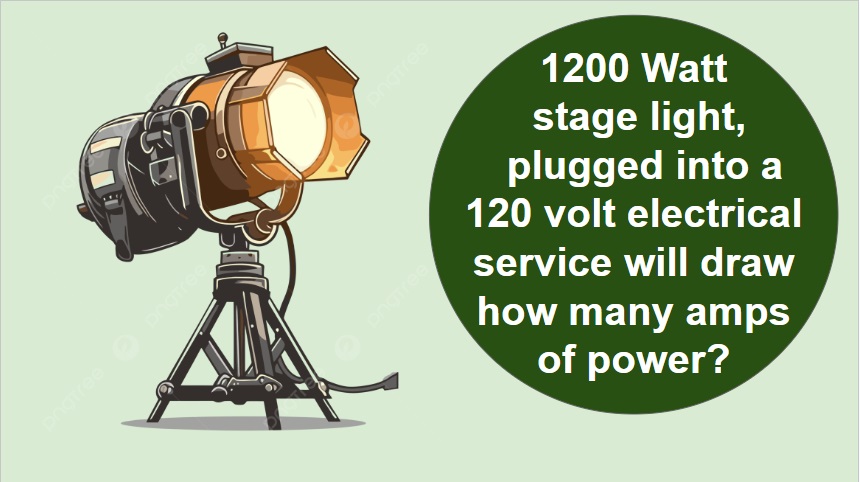
Question #10
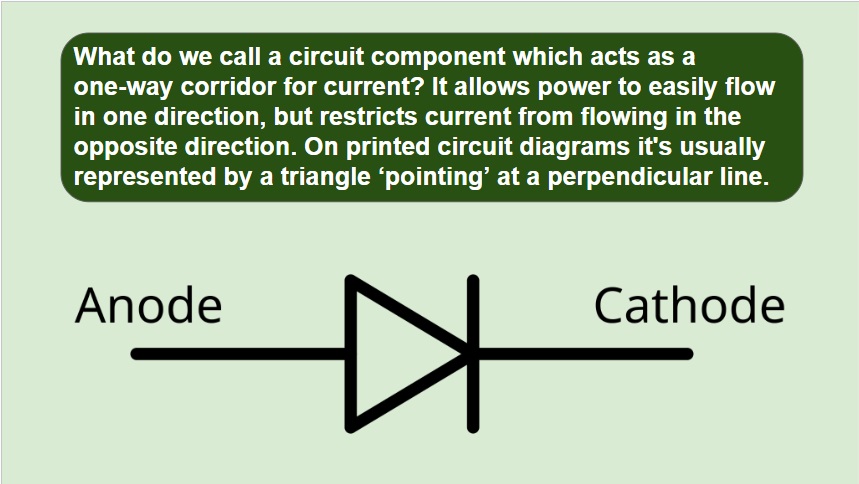
Question #11
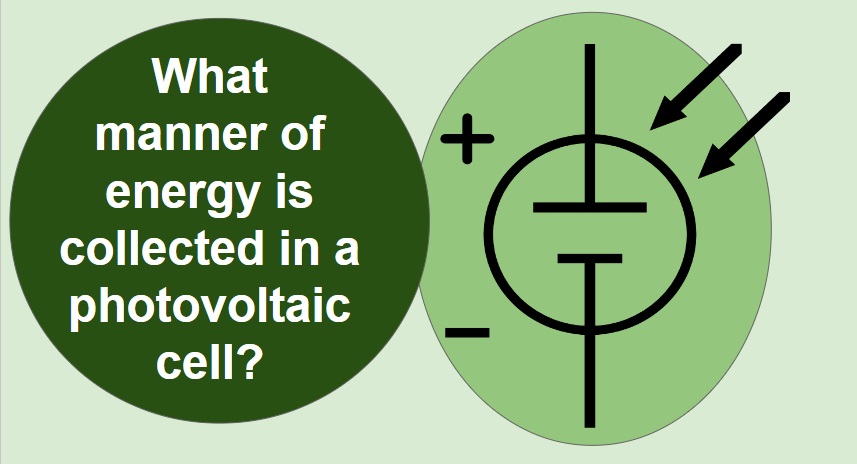
Question #12
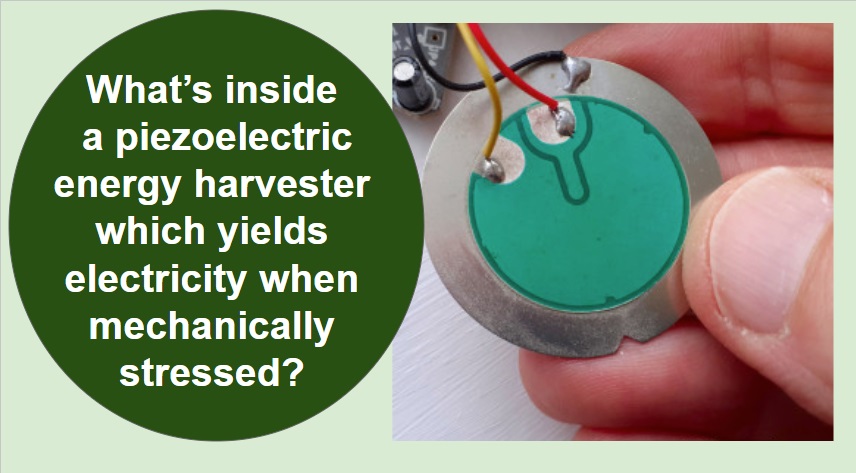
Question #13
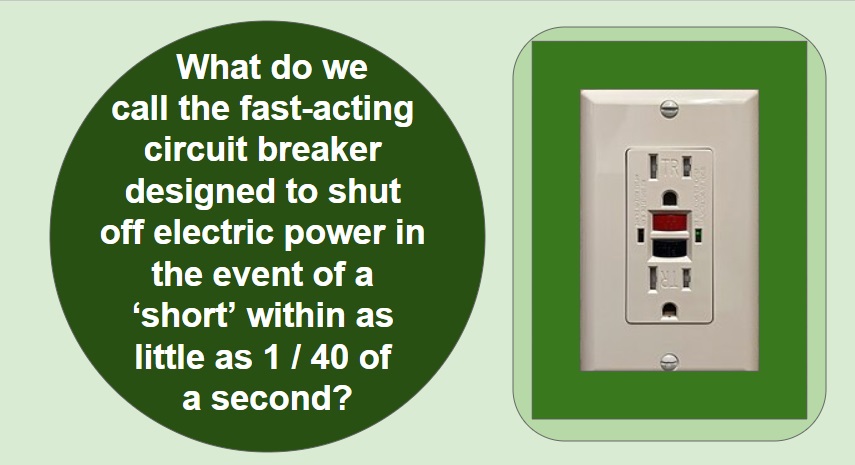
Question #14
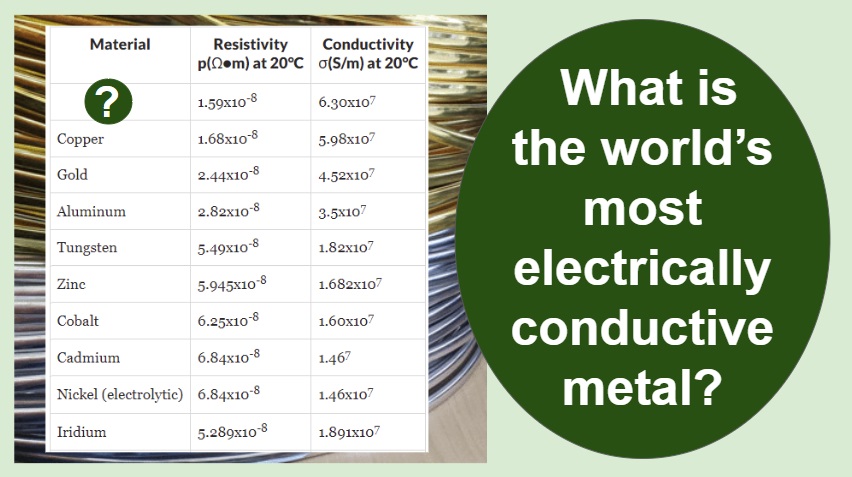
Question #15
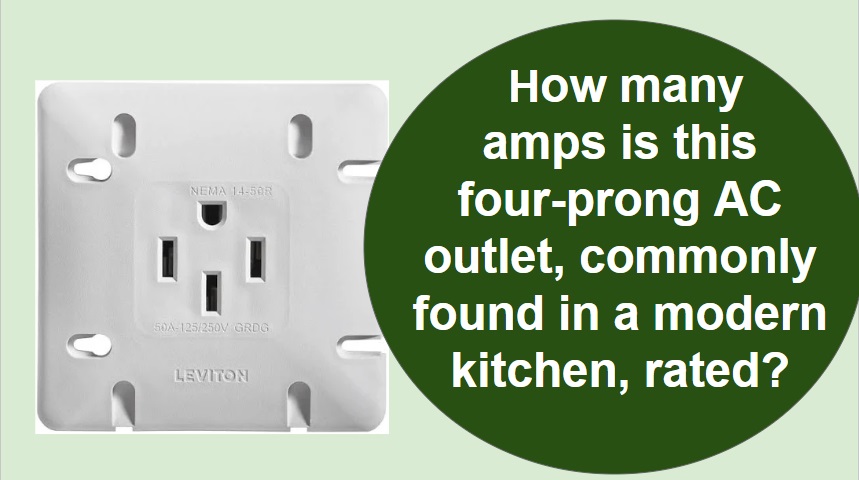
Question #16

Question #17
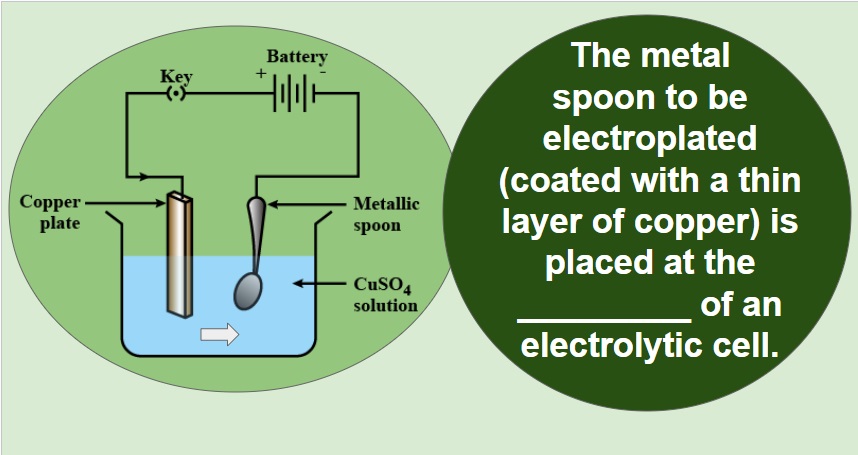
Question #18

Thanks for playing.
Electrician Trivia Game Answers
Question #1
Who was the first electrician?


Michael Faraday’s many discoveries include the principles underlying electromagnetic induction, diamagnetism and electrolysis. Although Faraday received little formal education, as a self-made man, he was one of the most influential scientists in history.
Some say William Gilbert was the first to discover electricity, although it’s hotly debated. Known to history as Gilberd, the early 17th century philosopher was an English physician, physicist and naturalist who is largely remembered for his book De Magnete. Faraday is the superior choice when considering someone for the role of a first electrician. He came along a century after Gilberd. In 1831, Faraday discovered “induction” or the generation of electricity in a wire by means of the electromagnetic effect of a current in another wire. His induction ring was the first electric transformer. In a second series of experiments in September 1831, Faraday discovered magneto-electric induction, and the production of a steady electric current. To do this, Faraday attached two wires through a sliding contact to a copper disc. By rotating the disc between the poles of a horseshoe magnet he obtained a continuous direct current. This was the first man-made electrical generator. From his experiments came devices that led to the modern electric motor, generator and transformer.
Faraday continued publicly performing great electrical experiments. In 1832, he proved that electricity induced from a magnet, and voltaic electricity produced by a battery, and static electricity from a fuzzy wool sweater were all versions of the same force. He also did significant work in electrochemistry, stating the First and Second Laws of Electrolysis, which laid the basis for electrochemistry, another beneficial modern industry.
Questions #2
What do the anagrams AC and DC mean to an electrician?

ANSWER
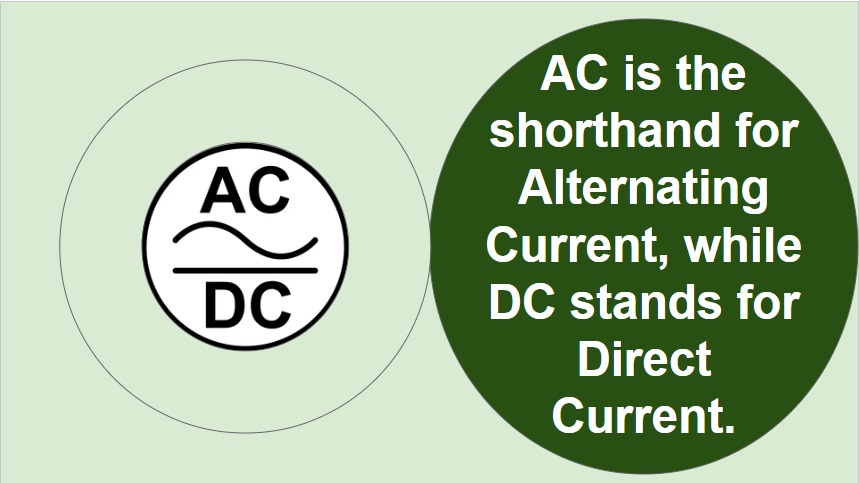
If you’re a fan of the Australian rock band AC/DC, then you’re probably already aware of how they chose their name. The Young brothers, Angus and Malcolm saw the letters AC – DC on the side of their sisters’ sewing machine (which could run on batteries) and they thought it’d be a terrific band name. As we all know, AC / DC is the English abbreviation for alternating current and direct current. The brothers have continued the band’s electrical engineering content theme with album names such as High Voltage, Powerage, and Flick of the Switch.
Question #3
Who was the Serbian born engineer who pioneered many principals related to Alternating Current?

ANSWER

Born and raised in Serbia, Nikolai Tesla studied engineering and physics in Belgrade and Paris in the 1870s. He gained practical experience in the 1880s working in telephony at Continental Edison (in Europe). In 1884, Tesla immigrated to the United States where he worked at Edison Machine Works in NYC before setting up his own shop to develop electrical and mechanical devices. His AC induction motor and related polyphase AC patents, licensed by Westinghouse in 1888, earned him a considerable fortune. Tesla’s patents became the cornerstone of the electric polyphase system which Westinghouse championed in the marketplace.
Today, the name Tesla denotes the world’s most high profile electric car maker and largest fast charging network. Located on major routes near convenient amenities, Tesla Level 3 Supercharger installation service is a core JML Electric offering across Ontario
Question #4
What do we call any materials tendency to maintain magnetism?

ANSWER
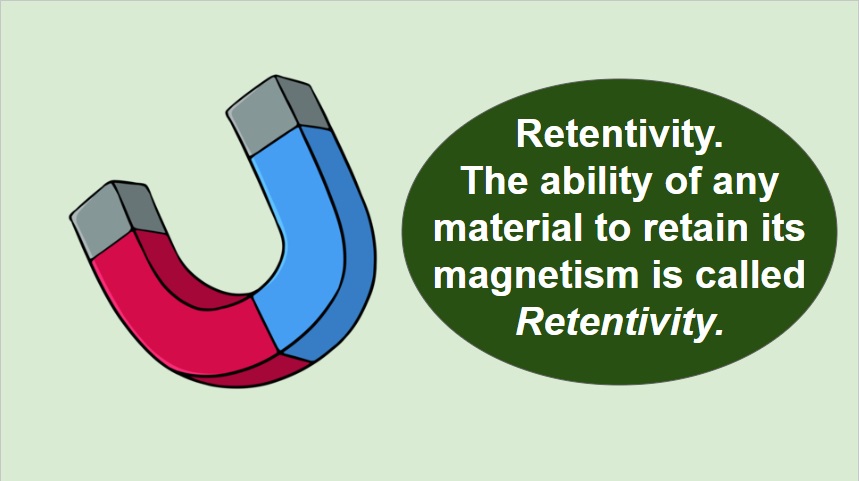
The capacity of a magnetic field to remain active in a substance after the external source has been removed is called retentivity. Remanence, remnant magnetization or residual magnetism is the magnetization property left behind in a ferromagnetic material (such as iron) after an external magnetic field is removed. Colloquially, when a magnet is magnetized, it has remanence. The word remanence is derived from remnant + ence, meaning “that which remains”. The term retentivity is used to express remanence as measured in units of magnetic flux density.
Question #5
What is the relationship between Amps, Watts and Volts?

ANSWER
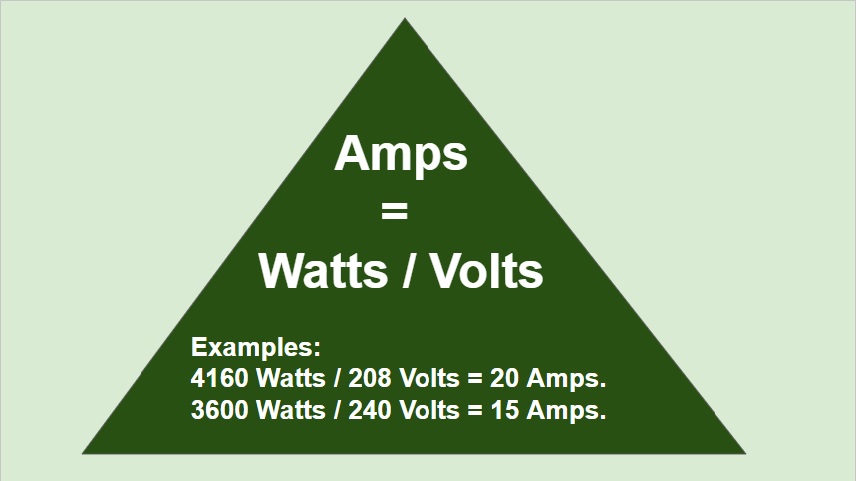
Electricians keep this fundamental equation in their brains as they calculate power loads. Good technicians are very aware of the relationship between Amps, Watts and Volts. They could imagine a long waterpipe, and someone opening a valve. Water flows out, even though no individual drop of water has traveled the full length of the pipe. The pressure drop, however, has traveled the distance, however lengthy. Voltage, measured in Volts (V) after Alessandro Volta is the “pressure” of electricity. Current, measured in Amps or Amperes (A) after Luigi Ampere is the “flow rate” of electricity (how many electrons per second flow through a given conductor). Current describes volume but not pressure. Power, measured in Watts (W) after James Watt is how we quantify the useful work being done by electricity. Watts reflect work being done at a given moment, NOT the energy consumed over time. Power in Watts is calculated by multiplying voltage in Volts with the current in Amps: 10 Amps of current at 120 Volts produces 1200 Watts of power.
Question #6
What do we call the component used to control the opening and closing of an electric circuit?

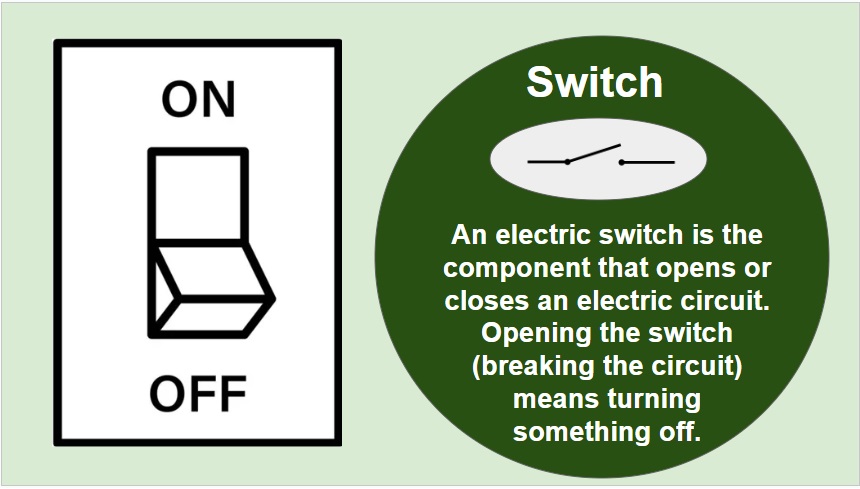
Switches are the critical devices which control the opening and closing of circuits. A closed circuit provides a complete path for current to flow. If there is a break anywhere in the circuit in which current could not flow, it would be an open circuit.
Question #7
What do we call the sacrificial device used to protect a circuit?

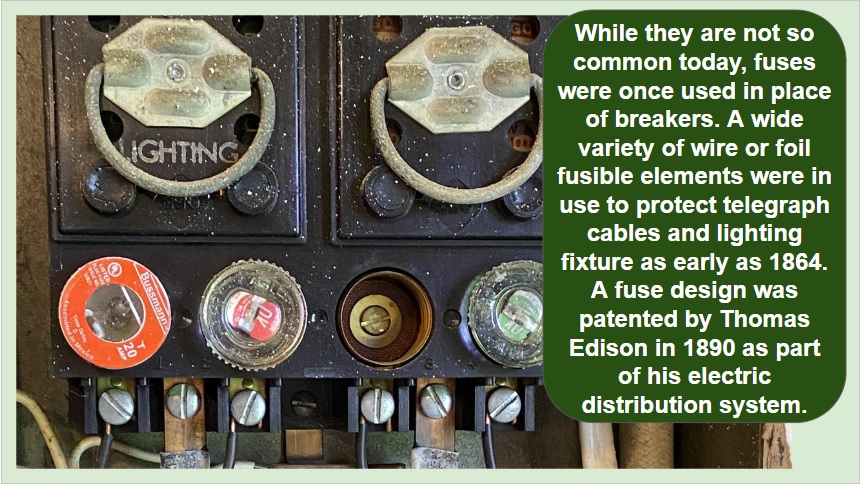
In electronics and electrical engineering, a fuse is an electrical safety device that operates to provide overcurrent protection of an electrical circuit. The essential component is a metal wire or strip which melts when too much current passes through it, safely breaking the circuit.
The main difference between fuses and circuit breakers is that fuses cannot be reused and make electronic waste while circuit breakers can be tripped and reset over and over again. Circuit breakers are used to protect homes and devices against overloading and short-circuiting while fuses protect devices and homes against overloading only. JML Electric’s residential electricians are frequently asked to upgrade and replace fuse panels with safer and more convenient ‘breaker boxes’ – modern electrical panels.
Question #8
What is the voltage of a Duracell size-D battery?

ANSWER
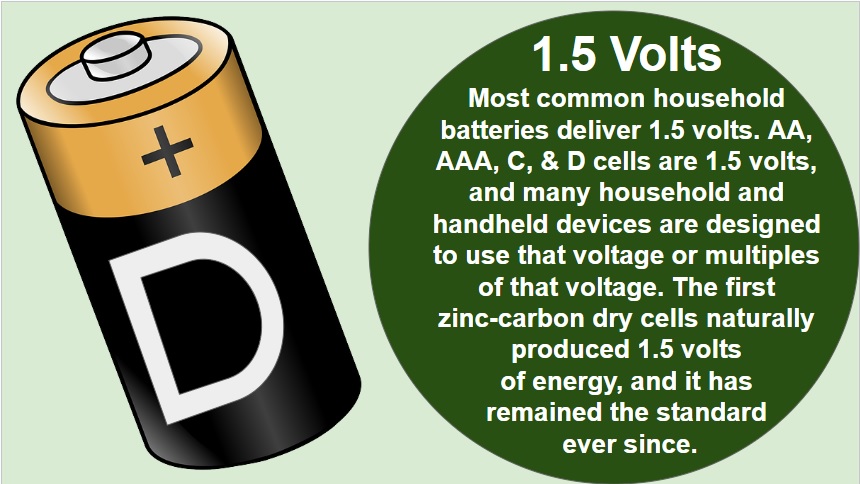
1.5 volts is the answer. A classic nominal voltage, Duracell AA, AAA, C, & D cells are all 1.5 volts, and many household and handheld devices have been built to use that voltage, or multiples of that voltage. The first zinc-carbon dry cells naturally produced 1.5 volts of energy, and with no obvious improvement ever reaching the market, this has remained the standard voltage for small dry cell and and rechargeable batteries ever since. Most frequently employed today in large flashlights, size-D batteries were once famously used to power the ‘ghetto blaster’ portable stereos which were popular in the 1980s (and which required as many as eight size -D batteries!). These big cylindrical battery cells are typically used in high current drain applications, such as radio receivers, and transmitters, and other devices which require more power for longer time periods.
Question #9
A 1200 watt lamp will draw how many amps?

ANSWER
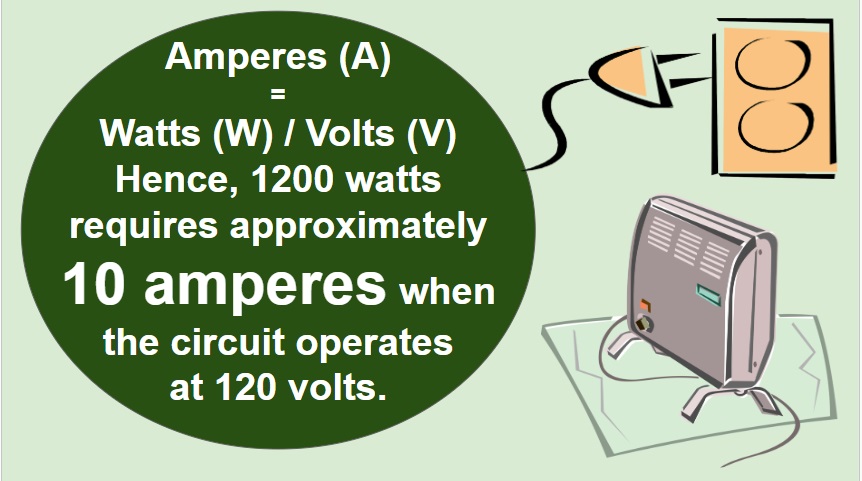
Frequently employed as commercial electricians, JML electric has engineers help who local business owners and captains of industry manage their electrical loads. We use our calculators and do the math to distribute consumption and avoid ‘plugging-in’ too many power-hungry devices on a single 20 amp circuit. A modern assembly plant could have as many as a hundred 50amp circuits. Restaurants of any size need twenty or more breakers to separate fridges, fryers, stoves, rotisserie ovens, microwaves, ventilation equipment, security, lighting front and back, TV’s, exterior signage and whatever outlets they allow the public to use. In your own kitchen, it helps if you spread out the load by plugging your kettle, microwave, toaster, and blender into multiple different circuits.
Question #10
What do we call a one-way power corridor for electric current?

ANSWER
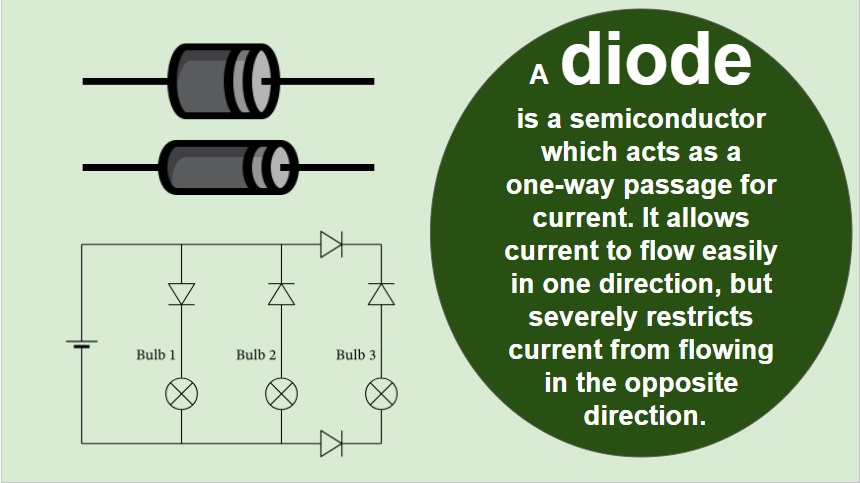
A diode could be viewed as an electronic version of a check valve. In electronics, it’s a two-terminal component which has high resistance on one end, and lower resistance on the other. The fundamental property of an electrical diode is to conduct electric current in one direction, along the path of least resistance. Diodes are used as rectifiers, signal limiters, voltage regulators, switches, signal modulators, signal mixers, signal demodulators, and oscillators.
Question #11
What manner of energy is collected in a photovoltaic cell?

ANSWER

A photovoltaic (PV) cell is commonly called a solar cell and is a nonmechanical device which converts sunlight into electricity. Sunlight is composed of photons, or particles of solar energy and JML Electric is market leading solar power collection engineer in Oakville and Mississauga. We’re experts at designing solar arrays and installing solar panels on both commercial buildings and residential houses. We have installed thousands of panels on flat and sloping roofs and have assembled many free-standing solar arrays including solar carports.
Question #12
What’s inside a piezoelectric energy harvester which yields electricity when mechanically stressed?


Piezoelectricity means electricity resulting from pressure and latent heat. It is derived from Ancient Greek πιέζω (piézō) which means ‘to squeeze or press’ and ἤλεκτρον (ḗlektron) ‘amber’ (an ancient source of static electricity). The German word was coined in 1881 by the German physicist Wilhelm Gottlieb Hankel. The piezoelectric effect results from the linear electromechanical interaction between the mechanical and electrical states in crystalline materials with no inversion symmetry.
Question #13
What do we call the fast acting circuit breaker which will quickly shut off power in the event of a short?


Ground faults are unintended electrically conductive connections between an ungrounded conductor and normally noncurrent-carrying conductors, metallic objects such as enclosures, or earth. By energizing items that people can touch, they can create a safety hazard. When they subsist at levels below the fusing current, they can also create a fire hazard.
JML Electric installs stand-by generators for homes and businesses. We put ground fault sensing systems on electrical services exceeding 1000 Amps, 150 to 600 Volts. Ground fault sensing systems monitor whether the amount of current flowing into a circuit through phase conductors matches the amount of current flowing out.
Question #14
What is the world’s most electrically conductive metal?

ANSWER

Silver is the most electrically conductive metal and it has the highest thermal conductivity of any element, and the highest light reflectance. Silver is similar to Copper – it has a single valence electron which is easier to move than those of the other elements, making it the most suitable for the conduction of electricity.
Question #15
For how many amps is the four prong AC outlet, commonly found in a modern kitchen rated?

ANSWER

The four prong ‘stove plug’ has both positive and negative poles, a ground prong, and a neutral prong. This allows the line to safely carry a surplus charge to the ground, and it protects the appliance from power surges or anything which might make an excess charge and electrocute someone or damage equipment. The neutral wire allows the cord to safely carry the higher voltage to your large appliance, and is most commonly used in appliances where electricity is being turned into heat. Creating heat is generally an inefficient practice and takes larger amounts of electricity than other applications, so the extra layers of safety are necessary to prevent damage to the house, the power lines, and consumers.
Question #16
Which electrical device, patented in 1938, converts alternating current into direct current?

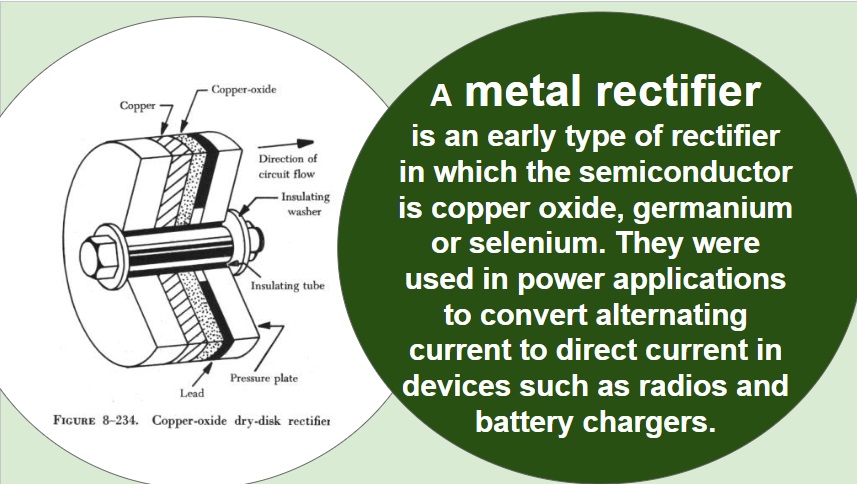
A metal rectifier is an early type of semiconductor rectifier in which the semiconductor is copper oxide, germanium or selenium. They were used in power applications to convert alternating current to direct current in devices such as radios and battery chargers. Westinghouse Electric was a major manufacturer of these rectifiers since the late 1920s. Today we JML Electric handles all types of rectifiers, most notably while installing EV charging stations which take AC alternating current from the power company and convert it to DC power to refill electric vehicle batteries.
Question #17
The metal spoon to be electroplated (coated with metal) is placed at the ___________ in an electrolytic cell.

ANSWER
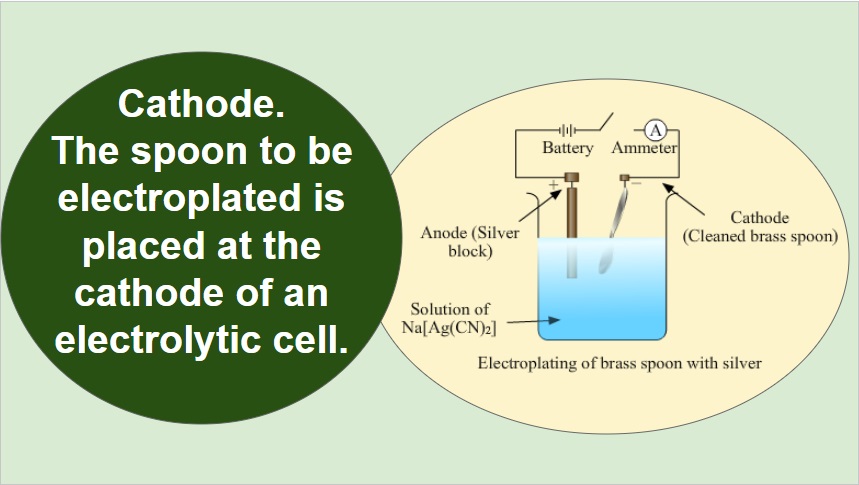
Electroplating metal goods involves submerging the pieces in an acid bath filled the metal ions. After passing an electric current through the solution, the ions deposit onto the part’s surface, placed at the Cathode of the cell, coating it in fresh metal.
Question #18
Which substance was electrified in a vacuum to make light in Edison’s first incandescent light bulb?

ANSWER

Edison tried many substances but had the most success with carbonized bamboo, which required baking the greenwood until it turned black. Lightbulbs with carbonized bamboo filaments constituted the product he first marketed to the public. His first successful lightbulb filament was actually made of platinum.* In January 1879, at his laboratory in Menlo Park, New Jersey, Edison built his first high resistance, incandescent electric light which worked by passing electricity through a thin platinum filament inside the glass vacuum bulb. The lamp burned for just under three hours.
Architectural photographers, cinematographers and exterior lighting designers and installers like we have here at JML Electric know how tungsten filaments emit a ‘warmer’ coloured light (3800 degrees Kelvin). The old school energy inefficient lamps are still used today in the motion picture industry to mimic interior lighting (simulating desk lamps, wall sconces and bedside fixtures, firelight and candle light) while quartz and cool white LED lights have higher colour temperatures (5600 degrees Kelvin) which appears as blue white luminance to our eyes. This whiter, bluer light is often used to signify moonlight and exterior streetlights.
Thanks for participating (or reading this far) – please leave a comment with feedback for the trivia master.

1 Comment
Comments are closed.